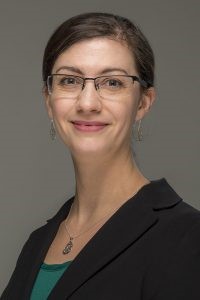Dr. Caitlin Howell
- B.S. Biology, University of Maine, 2006
- M.S. Biology, University of Maine, 2008
- Ph.D. Physical Chemistry, University of Heidelberg, Germany, 2011
- Postdoc, Wyss Institute for Biologically Inspired Engineering, Harvard University, 2015
https://umaine.edu/chb/faculty/caitlin-howell/
Research Group Website:
Current Research: https://umaine.edu/news/blog/2021/06/08/nih-funds-umaine-notre-dame-study-of-novel-liquid-coatings-to-reduce-catheter-associated-infections/
I’m from Oxford, ME, and came here as a biology/math undergrad. I stayed to do my master’s with Jody Jellison and FBRI, then went to Germany for my PhD in physical chemistry. I came back to the US to Harvard for a postdoc, then came here to join Biomedical Engineering.
How did you become an engineer?
I studied biology for my undergraduate degree, but during the process ended up working with engineers. It was a lot of fun not only being able to create new knowledge about how the world worked, but also to design new tools to help solve some of the world’s greatest problems. So I decided to work at the interface of science and engineering for my graduate degrees and post-doctoral studies.
Why Science? Why UMaine? What made you come to UMaine as a student and as a faculty?
I have always loved science and understanding how nature is able to do the types of things that it does. I came to UMaine because I’m from Maine originally and it was the most affordable option for me when it was time to go to college. I had a wonderful experiences while here and so decided to come back to teach once I got my PhD to help new students have a great time learning as well.
What are you doing currently at UMaine? How did you become a faculty in biomedical engineering?
I run the Biointerface and Biomimetic Engineering Lab here on campus. We are currently studying a range of things from how to create vascular networks in solid materials with 3D printing to how to stop proteins from adhering to medical devices to slow infections to how to detect surface contamination using smartphones. It’s a lot of fun to work with students to solve these problems. I became a faculty member here by applying when they needed new professors.
Some useful advice to prospective female students?
Science and engineering are hard– because if it were easy, someone else would have already done it! Keep at it, though, and you’ll be able to use your knowledge and skills to improve the lives of our community members as well as our environment. This is definitely one of the best jobs in the world.

